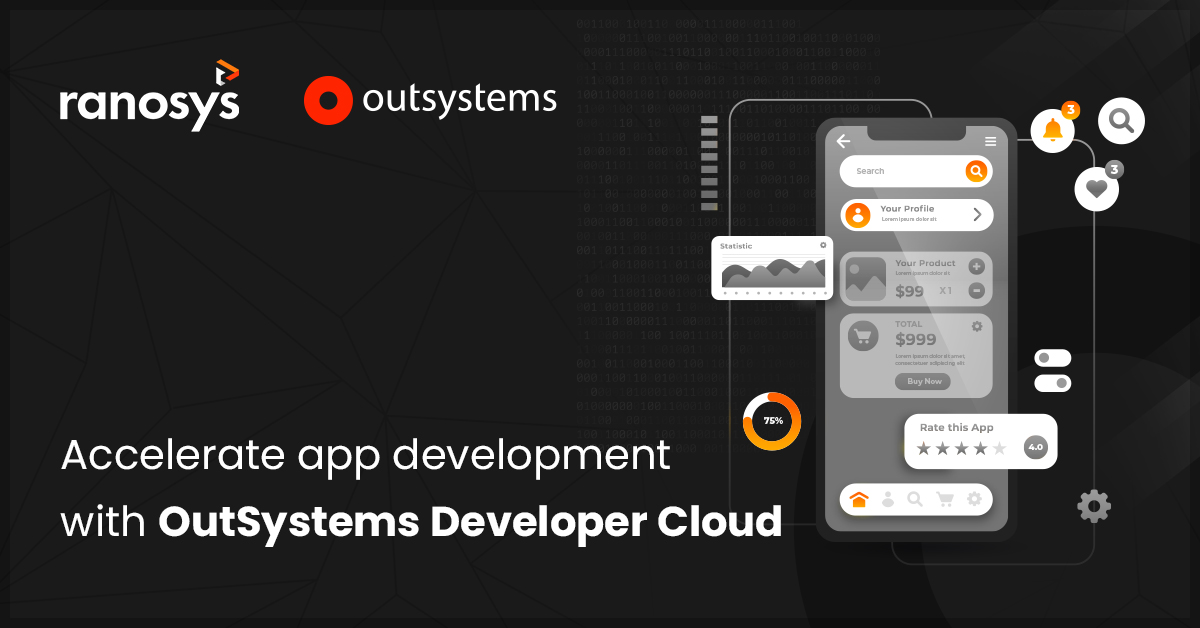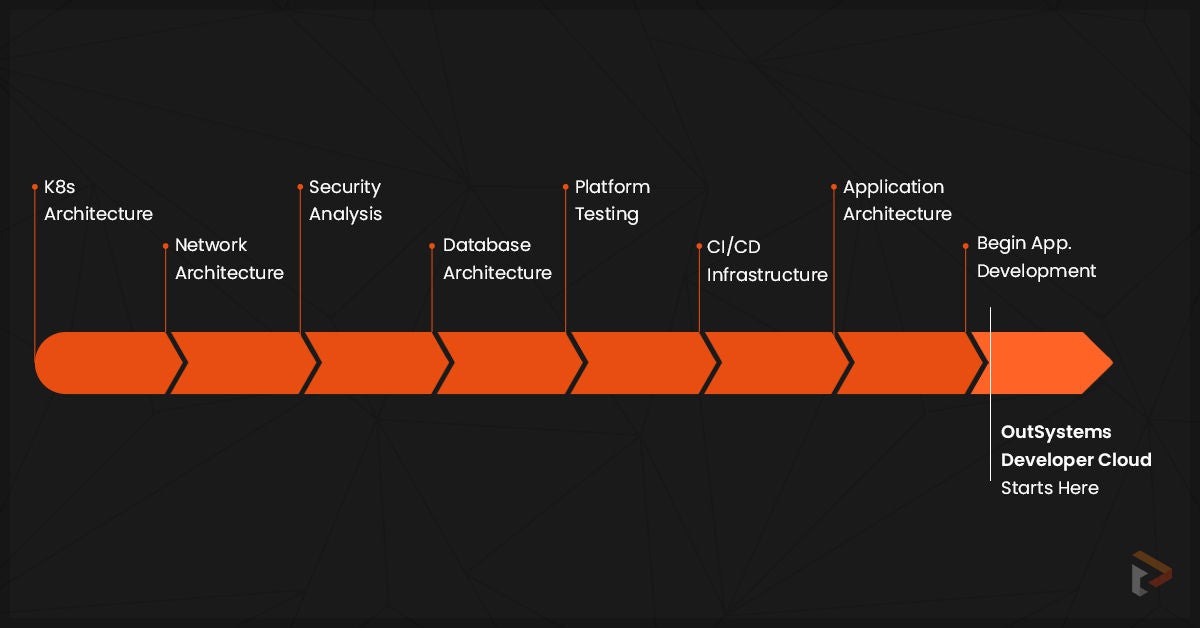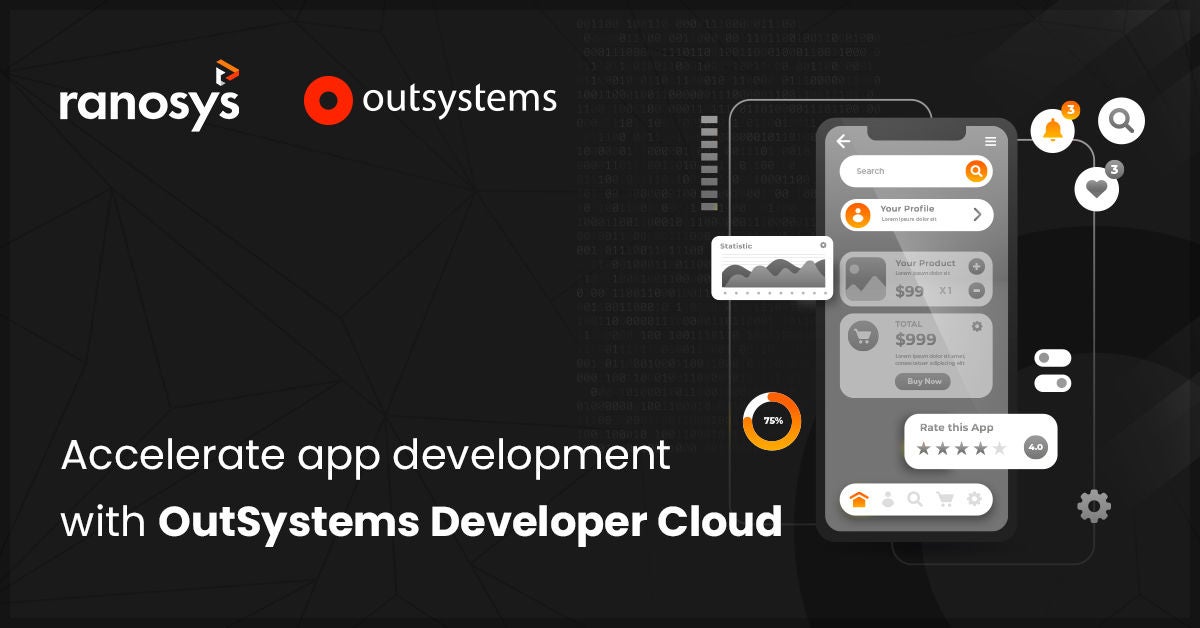With all the innovations in the technology industry, the challenge of building secure and scalable applications continues to grow. The shift from a traditional approach to modern cloud-native applications has helped businesses cope with rising customer expectations. While other platforms leave companies writing thousands of code, OutSystems low-code platform has always strived forward with its exciting updates and laying a solid foundation to turn disruptive technologies into a strategic alliance.
Following that vision, OutSystems introduced the OutSystems Developer Cloud (ODC) in late 2022, dramatically reducing the complexity of developing cloud-native applications and thus increasing productivity.
In this blog, we will discuss the challenges of building cloud-native applications and how ODC is leveraging low-code capabilities to help enterprises build effective applications that run on-premises and on multiple clouds.
The pressing challenges to building cloud-native applications
There is an urgency for companies to digitize their products and services. This means changing the experience you provide to users and improving your internal operational efficiency. Applications are reaching more users as their market grows. At the same time, companies are moving to the cloud to meet user expectations which are higher than ever, and also to be able to have a global distribution of their applications. Therefore, the last resort for enterprises seems to be investing in the cloud-native technology. Yet, even as a solution, enterprises today struggle with the many challenges of developing cloud-native applications, such as speed of development, security, performance, scalability, agility, and the availability of a talent pool for the same.
Let’s discuss some of the major challenges organizations face while building a cloud-native application:
#1. Non-functional requirements (NFRs)
NFRs show how applications work well regarding security, scalability, localization, maintainability, and drive complexity. Meeting NFRs is important to meet user expectations and compliance as it tells how applications would function in real-time. Moreover, they are essential in deciding the architecture of applications.
#2. Tool proliferation
NFRs drive tool proliferation as several tools and systems are needed to develop cloud-native applications thus adding to high development costs, especially in cases of multi-cloud implementation. Developers are managing more code architectures, and companies are struggling to invest in new products and innovations as they have to maintain huge application and system portfolios. Depending on the cloud provider you would like to use, the complexity gets three times higher, and the costs that come with it could be tripled due to tool proliferation.
#3. Talent shortage
To cope with the complexity of tool proliferation and NFRs, you need different skills for different areas in end-to-end app development. This naturally results in new roles emerging for which companies need to hire more people. This further adds huge costs in onboarding and training developers to build cloud-native applications.
So, how are companies adopting cloud-native application development? Large enterprises hire top talent that handles complexity because they can absorb talent costs and handle proliferation costs. Also, the license and infrastructure costs come along with these. But still, a lot of companies struggle to find a platform. This is where OutSystems introduced OutSystems Developer Cloud, formerly known as OutSystems Project Neo. ODC helps you overcome the challenges of NFRs, tool proliferation, and talent shortage, abstracting the complexity of adopting cloud-native applications. Let us first understand what ODC is and why you should adopt it for cloud-native app development.
What is ODC?
OutSystems Developer Cloud (ODC) is a new high-performance, low-code platform providing a modular, scalable environment for developing cloud-native applications. ODC state-of-art architecture rapidly decreases the complexity of developing cloud-native applications with containers, Kubernetes clusters, serverless functions, and various other modern technologies. ODC pre-packages architecture, configures your cloud runtime, and integrates the cloud services into the platform so developers can focus on implementing application logic. ODC is built on three parameters:
- Serious productivity: ODC enables you to adopt cloud-native applications development, abstracting the complexity, decreasing the talent requirements, exceptionally streamlining the automated application development process, and increasing productivity. ODC embraces modern CI/CD practices to provide unified experiences.
- Serious applications: ODC allows you to build mission-critical applications with the state-of-the-art architecture. You can build serious web and mobile applications regardless of the use case and how complex business requirements could be.
- Evergreen platform: ODC is always updated as the technology evolves without impacting any application. You will never have to go through strenuous platform or app updates or downtime. All the NFRs that users and enterprises expect are handled within the ODC platform without causing downtimes.
The OutSystems Developer Cloud (ODC) architecture
ODC is developed under the cutting-edge cloud native platform in which you are able to scale the entire platform and applications independently via platform development without any downtime. Platform and Runtime segregation separately ensures the scaling to any number of applications.







